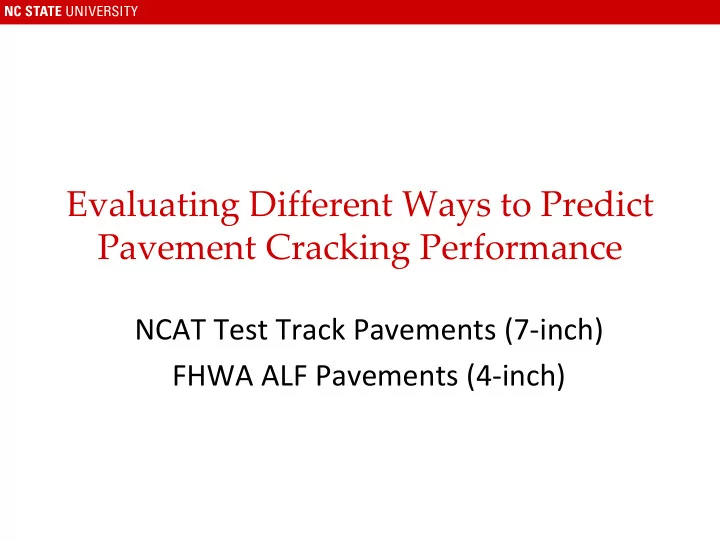

Evaluating Different Ways to Predict Pavement Cracking Performance NCAT Test Track Pavements (7-inch) FHWA ALF Pavements (4-inch)
S-VECD/LVECD Prediction
Constant Stress/Strain Based Prediction Number of Cycles to Failure ε t
NCAT Mixtures & Test Sections 1.25” Surface (9.5 mm) (32 mm) Mixtures Label 2.75” Intermediate (19 mm) (70 mm) Control C 3.00” OGFC O Base (19 mm) (76 mm) High RAP R RAP+WMA RW Dense Graded Aggregate 6.00” (152 mm) Base Foam WMA FW Evotherm WMA AW Stiff Subgrade
Laboratory-to-Field Correlation NCAT Sections LVECD Analysis Field Cracking Data O O FW FW AW AW C R,RW,C RW R
LVECD Predictions of NCAT Pavements
Using Controlled-Strain Mode
Using Different Modes of Loading Controlled-Strain Mode Controlled-Stress Mode
S-VECD Predictions on NCAT Pavements (7-inch) Strain-Based Controlled-stress assumption is better for 7-inch pavements! Stress-Based
Laboratory-to-Field Correlation FHWA-ALF (100 mm Pavement) LVECD Analysis Field Cracking Data 100 mm Crumb Rubber Control SBS Terpolymer (Terminal Blend) Crushed Stone Aggregate Base
LVECD Predictions of ALF Pavements
S-VECD Predictions on ALF Pavements (4-inch) Strain-Based Stress-Based Controlled-strain assumption is better for 4-inch pavements!
Ranking based on Energy (G R ) NCAT Pavements ALF Pavements
LVECD Predictions NCAT Pavements ALF Pavements
Recommend
More recommend